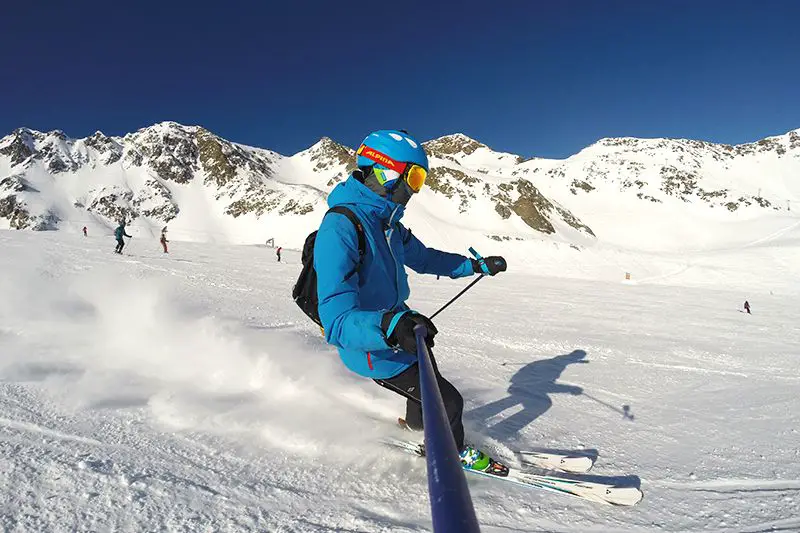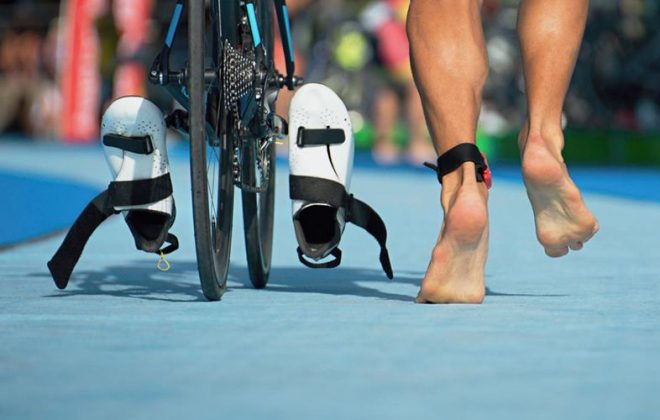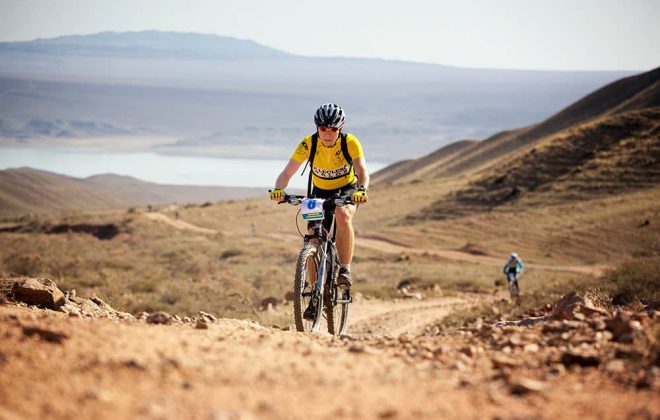Off-Season Training – Everything You Need To Know To Start The Year Strong
Putting together all the pieces of the puzzle that is endurance performance can be hard. Especially for athletes who juggle career, family and sport as a hobby. No wonder that in a busy life off-season training often takes the back seat.
For runners, cyclists, triathletes and other athletes the time between one season ending and the next one beginning can feel like a blur. Some carry on, but many turn their back on sport to stay warm during cold Winter training months, catch up on work, enjoy the holidays, and recharge after a busy year.
Yes, everyone needs a break. But, after coaching hundreds of athletes, I can say with confidence that the unstructured approach to off-season training just doesn’t work. Mostly because it doesn’t give enough stimulus to improve performance next year. But also, because it’s very challenging to return back to structure again.
So, what does work? That’s the question I’ll answer in this post.
The purpose of off-season training
As the holiday season comes closer, most Northern hemisphere athletes are wrapping up their competitive seasons. Days are getting shorter and colder. All those marathons, Ironmans and Ultra trail races are done. And now, more than ever, it can be tricky to figure out how to proceed further.
On one hand, you’ve trained hard throughout the past few months and are ready to give yourself a well-earned rest. The season was long and challenging, so it’s normal to feel like the appropriate course of action is to dial down on training, reduce stress and focus on other aspects of life.
There is another popular course of action. The one I took myself all too often during my professional career – powering through. Simply repeating (or doing more of) what was done during the season thinking it wasn’t enough. More volume, threshold sessions, race pace practice, etc. Chasing endless summer and carrying on without a clear goal or aligned plan for how to get better next year. In a way, feeling stuck and mentally being already in the next season while at the same time trying to ‘finish what was started‘.

But there is a third way. A much more effective strategy where you can have it all. Not only have fun and reset, but also excel long-term.
Winter training is an opportunity to take a step back, re-evaluate and figure out a way how to leap forward. In a way, even rebuild yourself. Back in the days our coach used to tell us ‘Remember, you can only get stronger in the winter. Not when you have competitions every few weeks’. Was it a way to motivate us to resist temptations during holiday season or keep us busy until the spring camps start? Maybe a little of both. But either way, the message stuck with me.
Read also: How To Avoid Getting Sick In Winter – 19 Tips For Athletes To Stay Healthy
Set yourself up for winter training
If you’re feeling a little worn down or unmotivated by the end of the season, know that you’re not alone. It’s very common for athletes to experience burnout after a long period of training and racing. After all, it’s simply not sustainable – mentally or physically – to maintain peak fitness throughout the year.
Even elite athletes are not at their peak fitness year-round. They’re maybe ~80% race-ready during most of the year and only build to 100% in the few months leading up to their ‘A race’.
Hard and extensive training pushes our body and mind into overdrive. And the purpose of off-season training is to physically and mentally relax whilst minimizing the loss of those hard-earned adaptations accrued in the build-up to the event. In a way, transition from that unsustainable 100% fitness back to manageable 80% with intention to begin the journey of building up for another race with a fresh and rejuvenated mindset. And, most importantly, be excited for the training ahead – not dreading it.
To achieve that a good practice is to take a couple of weeks off after every season and use this time to invest in yourself. Reconnect with hobbies, spend more time with family & friends, catch up on the activities you’ve been missing out on. Not necessarily stopping training altogether, but rather having less structure (and race-specificity) in it. In fact, it’s a great opportunity to use your fitness for fun and enjoy activities you had no time for (like going surfing or skiing).
Another important reason for slowing down is to give time for injuries or small niggles picked up in training & racing to completely heal. Even if the pain or injury is mild, this can prevent it from aggravating or becoming chronic. But again, don’t just sit still. Incorporate massage, mobility, stretching, active release techniques and even some bodywork (i.e. Yoga, Pilates) to help your body & mind reset.
After the break, get back into training gradually. Focus on quality of movement and bulletproofing yourself before adding any intensity.
Read also: Extended Training Break – How To Get Back Into Shape Quickly & Safely
Will I lose all my hard-earned fitness during off-season training?
One of the first things on athletes’ minds when thinking about taking a break is “How much fitness will I lose in 2 weeks of not training?”
Sure, there will definitely be a detraining effect, as we lose some of the hard-earned adaptations gained during training. Our endurance performance will go down due to loss of aerobic capacity (V̇O2max) and blood volume. We’ll experience reduced fat and increased carbohydrate oxidation. And our muscle glycogen stores and lactate threshold will decrease.
The extent of such detraining is highly individual and will depend on many factors. Age, history of training (i.e., how long you’ve been training and average weekly volume), lifestyle habits and many other variables will affect the rate of detraining. Some research even suggests that detraining effect is more quickly reversible for well-trained athletes.
But even with that in mind, thinking about how much fitness you’ll lose is not the right thing to focus on when it comes to off-season training.
Whether you are a competitive athlete or simply on a journey to lifelong fitness, your performance will stagnate if you don’t allow your body and mind to systemically recharge.
The important thing to remember is that if you’re training consistently, taking a week or two (or even more) off is not going to dramatically impact your fitness in the long term. Instead, taking such planned breaks will make you a more resilient athlete. While some fitness will be lost, what you’ll get in return is a rejuvenated body and mind fully ready for the new round of training ahead.
What matters is how you emerge from that break and whether you use the opportunity to build yourself even stronger.
Step back, change perspective and plan ahead
Instead of ‘floating around’ until it gets warmer or there’s a clear race on the calendar, use the off-season to step back, analyze and plan where you want to go. So that by the time the active part of the season starts you are feeling refreshed and ready to put in focused work.
Reflect on what worked during the season and what didn’t. What are you most proud of? Is there something you could have done better? What were the limiting factors in your training (lack of strength or mobility, poor nutrition habits, restless sleep, etc.)? Take 1-2 most significant issues and create a plan how to address those during the next few months. Build good lifestyle habits into your routine and let the time do the magic.
Doing such honest self-reflection helps athletes resume their training in a productive way and put quality effort to work on their weaknesses. On top of that, such intentional approach ensures athletes use their off-season to build a solid foundation and set themselves up for a strong and healthy year ahead.

As you plan, identify your priority events (A races) for the next season and put them in the calendar. Aim for 1-3 key races, not more. Then add a few B races where you want to perform well, but not at your 100%. Based on that, plan what you need to (and can) accomplish during the off-season. Just don’t make a mistake of clogging your calendar with as many events as you can. You’ll be burned out for your most important races and won’t enjoy the experience.
This is something that a coach can help you with.
Once you have a draft plan, you’ll be in a strong position to commit to high quality training cycles that have purpose.
Read also: Setting Goals In Sports: The Ultimate Guide To Reaching Your Full Potential

The Resilient Athlete
A Self-Coaching Guide to Next Level Performance in Sports & Life
Are you aiming to become a resilient athlete who is able to withstand any pressure? Be able to jump on any opportunity? Take any challenge life throws at you head on?
Then this book is for you.
Learn more5 Steps to an effective off-season training plan
So… How should my off-season training look like? How do I train in Winter to leap forward in Summer?
The key to off-season training is to retain some form of intensity, while at the same time reducing total volume, adding more flexibility and making sure most of the training is simple and fun.
Such consistent training breaks (or ‘resets’) are healthy and are a part of the process of becoming a resilient athlete.
Since your fitness is not going to be where it was prior to taking a couple of weeks off, you don’t want to rush the process upon return. Research confirms that it’s when your training volume is too low or too high you’re most susceptible to injury. Instead, start from the beginning and focus on the basics.
Even though starting from scratch may feel discouraging, athletes often find they get stronger than before during their next build phase.
So, how does off-season work in practice?
Step 1: change your schedule
For starters, the overall training volume will need to go down. To achieve that, decrease the frequency of aerobic training (number of sessions you do during the week). Reduce the duration of those sessions, too. In particular, those middle-of-the-week sessions that often overlap with work and family commitments.
Yes, off-season training does not mean ‘off’ altogether. Unless any medical procedures are needed (i.e. to care for the injury etc.), you should continue training during this period. Just less than usual and at a lower intensity. Also, with a different focus – to reduce fatigue while holding on to as many adaptations as possible. The same logic as during a taper.
Personally, I recommend keeping almost everything you do in or below Zone 2. That should keep training stress low but will stimulate those slow-twitch fibres that are so important in endurance sports. However, if possible, switch off from data and listen to your body instead. For the first few weeks just get the body moving with no numbers or goals.
Read also: Heart Rate Training Zones – Complete Guide To Endurance Gains
Slowing down and deviating from routine and intensity is NOT a sign of weakness. When done right you’ll enjoy a strong foundation that will help you improve when more intense training will start next year.
Moreover, with a decrease in the number of hours you’d need to dedicate to focused training, there is an opportunity to try new activities. Or return to old ones that you may have postponed to a later date. Yes, taking out that mountain bike for a spin or waxing a pair of XC skis. Cross-training, as it’s called, helps to activate muscle groups that may not get used in the same way in your primary sport (i.e. running, triathlon). It’s very good for mental health too.

Step 2: lay the physiological foundation
One of the things that often limits performance is muscle tightness and the resulting imbalance. It slows down oxygen transport, contributes to lactate build up, limits the power we can produce (by reducing the range of motion) and is a recipe for injury. Often such common issues like knee and lower back pain can be attributed to tightness and/or weakness of certain muscles.
Off-season is the perfect time to address all these issues and set yourself up for a strong season ahead. And here’s how.
As you’re getting back into training after a break (or after a race), start with mobility. For the first two weeks get into a practice of actively looking for and relieving tightness throughout the body. As little as 10-15 minutes per day can relieve muscle tension and increase their capacity to perform. Gentle foam rolling and easy exercises that take the joints through the full range of motion (i.e. circles, swings, twists) are perfect for that.
If you don’t know where to start, perform a Sun Salutation flow every morning (below). It’s a great way to mobilize the body and wake it up.
Next comes core strength.
All muscles in our body are inter-linked. When one muscle gets overused or fatigued, the load is forced on adjacent or supporting muscles, causing discomfort or pain. Core acts like a central hub holding together all other muscle groups. And since its function is to stabilize the entire body, all muscles that attach to the spine contribute to a strong core – not just the six-pack. Abs, lower back, obliques, hips, glutes, adductors and even lats.
Adding core training into the schedule yield significant performance improvements. It improves posture, balance and form, as well as minimizes chronic muscle pain and mitigates injury risk.
A very effective way to strengthen core would be to do a few so-called core control circuits 1-3x per week. These circuits consist of 4-8 core exercises performed with no breaks in between and the aim is to maintain control over the body (and keep it straight). One circuit can take as little as 2-3 minutes to complete, but the exercise is much harder than it sounds. The constant tension makes it increasingly harder to keep control.
Step 3: build optimal form
Once muscle tightness is relieved and core control exercises become part of the weekly routine, athletes can proceed to honing their form. The reason for this particular order is because when joints are mobile and muscles not tight, it’s easier to execute and train right movement patterns.
Building efficient form happens through imitating sport-specific movements. This is done via various drills, specific strength exercises, as well as exercises on unstable surfaces (like suspension trainers). These activities are aimed at improving kinaesthetic awareness and body control. Over hundreds and thousands of such intentional repetitions the movement becomes more effective as athletes learn to apply power better.

The fact that most of the training in the off-season is low-intensity is an opportunity to not only maintain the so-called aerobic base, but also to execute technique-based sessions. To do that include drills (static or dynamic) that help activate relevant muscle groups and build strength in stabilizer muscles. Adding light resistance to the movement can also help to better target the necessary muscles. For example, using stretch cords during a swim warmup.
Here’s an example of how form-focused off-season training routine might look like for a triathlete.
| Mon | Tue | Wed | Thu | Fri | Satur | Sun |
| Swim (45′) Easy, incl. warmup with swim cords and catch drills | Run (45′) Zones 1-2 with high knee drills | Bike (45′) incl. 10×30″ at 110+ cadence (smooth pedaling) | Swim (45′) 20×50 at IM pace (every odd with a pull buoy) | Run (45′) Zones 1-2 with butt kicks drills | Bike (2h) easy ‘coffee stop’ group ride | Rest – family day |
| Strength & mobility | Strength & mobility | Optional – mobility / foam rolling |
At a first glance these sessions might seem too easy. However, when done intentionally and consistently, these help to develop efficient form which is a critical component of fast endurance racing.
Step 4: build absolute strength and power
Strength is the key piece in a well-balanced and resilient athlete puzzle. Even for endurance athletes strength plays a crucial role. And not just as a way to prevent injuries – we’ve already established that mobility and core strength ensure that.
Developing peak force increases muscle recruitment and neuromuscular control, which directly translates to aerobic performance.
Or, in simple terms, if muscles are overall stronger they will be working at a lower percentage of what they’re capable of. This means they’ll use less energy (more efficient) and will allow the athlete to go harder for longer. Just what we need, right?
Strength training is also an anabolic activity (stimulates lean muscle growth), as opposed to aerobic exercise that tends to be catabolic (breaks tissue down). Besides making one a more well-rounded athlete, strength training helps to offset some of the lean tissue loss that is associated with extensive aerobic training. This is especially important for 40+ athletes for whom it can delay or even reverse lean tissue loss associated with ageing.
So, off-season is the time to get stronger. A lot stronger, in fact.
During winter training the overall volume is low, which is an opportunity to get a solid dose of resistance training done. This way fatigue and heaviness associated with it will have less of an impact on aerobic workouts. And there’s plenty of time to develop peak force and then translate that into speed and ability to sustain power. The latter is particularly important for cycling performance or navigating hills in running.
When planning your winter strength training, ensure you split it into 3 distinct phases:
- Adaptation (duration: first 2-4 weeks). The goal of this phase is to prepare the body for the season ahead (see step 2 of this post). Relieve muscle tension, correct muscle imbalances and develop core & base strength.
- Maximum strength (duration: 1-2 months). In this phase your aim is to teach the body to recruit as many muscle fibres as possible without exhausting them. Therefore, less repetitions (1-5), higher load (70-90% 1RM) and longer rest (3-5min). This approach will trigger release of Human Growth Hormone, neuromuscular adaptations and promote mitochondria growth in them without accumulating too much H+ ions (fatigue). Use compound movements, like deadlift, quarter squat or bench press to achieve that. Alternatively, use stato-dynamic exercises to reduce pressure on joints.
- Power (duration: 1-2 months). As you develop peak force, the next step is to translate it into power and sport-specific strength. Sessions in this phase are typically executed in a circuit format (6-12 exercises), at a fast pace and with little rest (<1min). Keep in mind, you might not be fully recovered before the next exercise begins. That is on purpose and trains the body’s capacity to tolerate lactate.
Read also: Triathlon Strength Training – How To Plan For Base Phase & Beyond

Step 5: maintain aerobic base and speed gains
Every athlete relies primarily on aerobic energy system to power most of his or her training & racing. The word aerobic means that the body utilizes oxygen to ‘burn’ macronutrients and generate energy in mitochondria – small powerhouses located in muscle tissue. Those who are more trained also tend to have a better aerobic capacity and are, therefore, able to run faster for longer. An untrained person, on the other hand, might even need to stop to take a breather.
Improving aerobic capacity will make a person faster and more efficient in everything he or she does – be it training for a race, going on a hike or even playing with children. This study shares how even a full-out threshold run (1h) is only ~35% anaerobic (without oxygen). Which is why every athlete will benefit from focused aerobic training.
Most of the aerobic base training phase includes prolonged or/and frequent low intensity exercise. Generally, lots of volume in zones 1 and 2. However, many athletes ramp up their volume only in late Winter / beginning of Spring when there’s more daylight (and races start to come closer) and by doing that leave a lot of performance gains on the table. Instead, as already shared, shift your aerobic base maintenance into cross-training mode. Enjoy doing other sports and continue to move as much as possible.
During the off-season athletes can also add some intensity to trigger further adaptations and retain some speed.
Research also suggests that including a small dose of high-intensity training helps to minimize reduction in fitness and performance. It also provides athletes with a better foundation to launch into that first focused training block.
A great way to maintain ability to go fast during off-season training is by including fartlek session once a week. Short efforts (30sec to 2-3min) of varying intensity (Z3 to Z4) allow the athlete to maintain the ability to go fast and make that speed the ‘new norm’ for the season ahead. As a result, gradually speed gains we developed during the harder part of the season become permanent.
Read also: How To Build Running Endurance – 7 Science-Proven Methods

Putting it all together – off-season training plan for triathlon, running, cycling and beyond
For many athletes winter training is a period of uncertainty when structure, focus and training volume (and with that obviously fitness) dissolves away. But it does not have to be that way.
Take an off-season training break. Rediscover your passion for sport. Have fun, mix it up, and cause some muscle confusion with different types of exercise.
As you get back, follow the structure laid in this post. It may take some time for things to feel normal again. But – rest assured – it’s all a part of the process. Take care of yourself by listening to your body, and you’ll be back mentally & physically stronger before you know it.
To help you level up during winter training, I’m sharing a rough off-season training plan. Any endurance athlete (triathlete, runner, cyclyst, etc.) can follow it to prepare for the year ahead:
- October / November (depending on the last race): take 2-3 weeks off from structured training. Stay active and do some non-focused exercise (for fun). Use the time to review your season and plan ahead. When you feel rejuvenated, ease back into training with 2-4 weeks of short sessions and exercises focused on relieving muscle tension, as well as building base & core strength. Throughout this time focus on correct form and include exercises aimed at improving the efficiency of the running stride, pedal or swim stroke. (i.e. drills and resistance band exercises that mimic the movement).
- December – January is the main part of the off-season training. The goal is to build absolute strength and in between do light aerobic activity. Aim to perform 1-3 strength sessions per week focused on improving maximum strength. These can be weight training (1-5 repetition, 70-90% of 1RM), stato-dynamic exercises (40seconds per each repetition) or advanced bodyweight movements (i.e. pistol squats). In between strength sessions include easy aerobic activity and throw in a fartlek session once a week.
- February – March is the time to build more power and start translating that absolute strength into sport-specific movement. Aim to include ~2 strength sessions per week during which you perform exercises at a fast pace and with little rest in between (<1min). In parallel, start adding distance to your aerobic sessions but keep them at low intensity. You can maintain some moderate (Zone 3) intervals in a form of fartleks or do strength-focused work instead (uphill running, low-cadence cycling).
- Late-March onwards is when you can start including more specificity into your training. At this point of the season strength moves into ‘maintenance mode’ as the focus turns into classic aerobic sessions. You can start a dedicated build towards your goal race.
Have an opinion? Share via links below and tag @theathleteblog
Tags In
Andrejs
GET A FREE TRAINING PLAN
Subscribe to my email list and get access to a free 4-week “back in shape” training plan
You’ll also get two full-body strength sessions and some other goodies!

How did I get here?
Hey there! My name is Andrejs and I am here to inspire, entertain and get you fit for any adventure.
I went from being an over trained pro athlete to an endurance coach sharing how to listen to your body and live life to the fullest.
Traveling, new sports & activities brought new meaning to my training and made it much more effective, fun and enjoyable. And I'm here to help you do the same.


